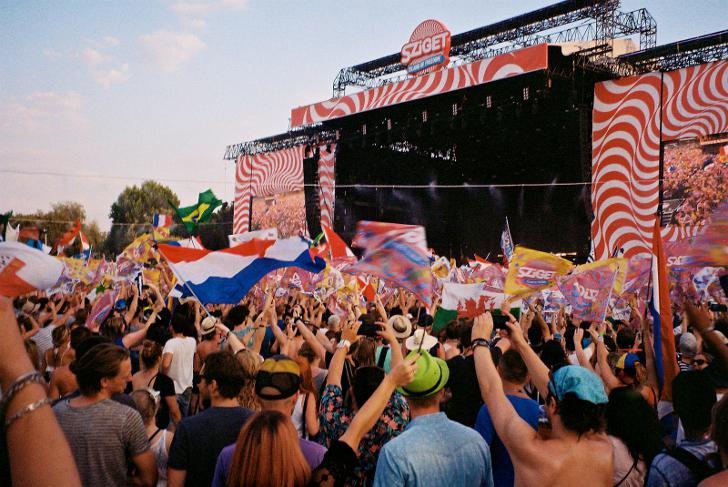Following the fall of the Iron Curtain and the collapse of the Communist regime in Hungary in 1989, most summer festivals previously held in Budapest were canceled due to a sudden loss of government funding. The revival of the summer festival scene began in 1993, when a small group of rock enthusiasts organized a music festival called Diáksziget (Student Island). It was a relatively low-profile student event. The first festival was deemed a success and the organizers decided to host it every summer.
In 1996, the festival gained its first major sponsor, PepsiCo, and was renamed Pepsi Sziget. It has been called by its current name, the Sziget Festival, since 2002. “Sziget” is the Hungarian for “island”. The festival was named so because it is held on Óbuda Island (Óbudai-sziget), also known as Hajógyári Island, located on the Danube in downtown Budapest.
The present-day Sziget Festival is one of Europe’s largest music festivals. It has won two European Festival Awards in the category Best Major Festival and was featured on the 5 best festivals in Europe list by The Independent in 2011.
The festival is held every August. It features more than 1,000 performances over a week and attracts almost 500,000 attendees. About half of all visitors come from outside Hungary, including countries such as Germany, the Netherlands, the UK, Italy, France, Ireland, the Czech Republic, Austria, Spain, Croatia, Italy, Romania, Russia, Serbia, Slovenia, Turkey, and Ukraine.
The Sziget Festival encompasses different genres and styles of music, including rock, alternative rock, punk rock, psychedelic rock, heavy metal, pop, synthpop, reggae, indie, hip hop, world music, electronic dance music, and more. World-class musicians who have performed at Sziget include Bastille, David Guetta, Muse, Sia, Rihanna, Ellie Goulding, Florence and the Machine, Gogol Bordello, Placebo, The Prodigy, Korn, Franz Ferdinand, Snoop Dogg, Sum 41, 30 Second to Mars, and many others.
In addition to music, the Sziget Festival features other arts and activities including dance, theater, cinema, circus and acrobatics, visual arts, street performance (busking), sports (tennis, soccer, volleyball, bungee jumping, rock climbing, indoor rowing), and more.

Photo: Pietro Bacherotti




